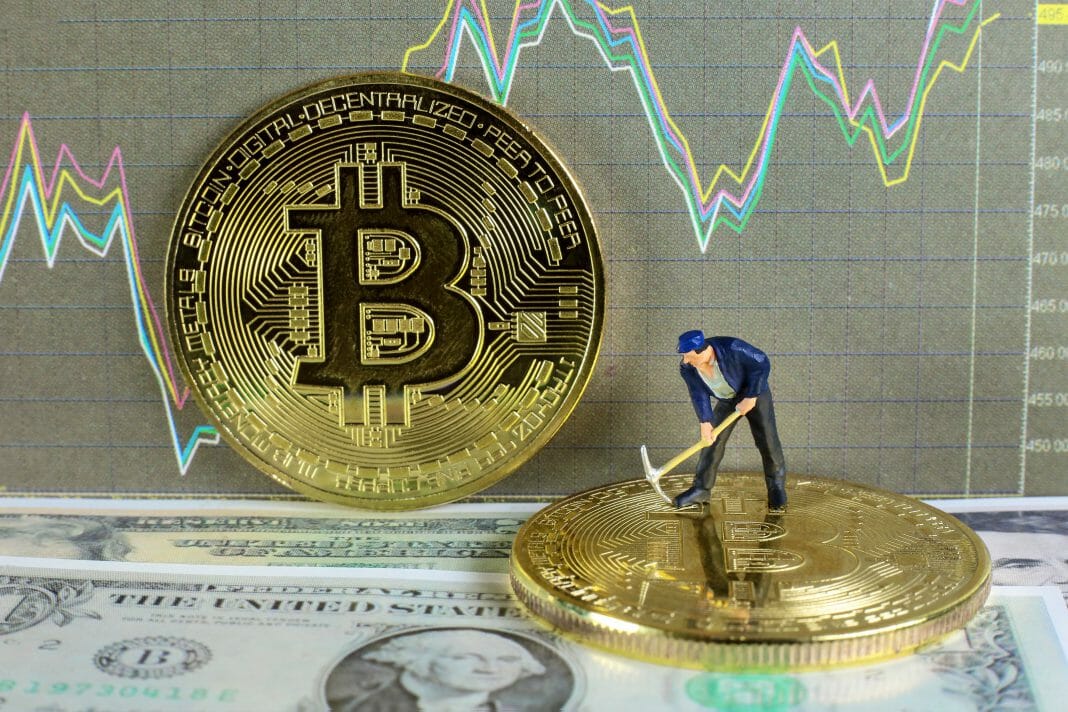A recent increase in difficulties means an influx of new miners, likely attracted by the recent rally in the price of Bitcoin, which peaked at a staggering $73,800 on the same day.
Winds of change are blowing in the Bitcoin landscape. On March 14, 2024, the network witnessed a monumental change: mining difficulty skyrocketed to a record 84 trillion hashes. This unprecedented challenge coincides with another major event on the horizon: The Bitcoin halving scheduled for April.
According to BTC.com, the rate has increased by almost 5.80% since the previous modification. The mining hashrate of the original coin has also peaked, indicating that more people are now participating in the mining process. Currently, the value stands at 617 EH/s.
Bitcoin Mining: The Difficulty Dilemma
Mining Bitcoin is not an easy task. Miners compete to solve complex cryptographic puzzles, and the difficulty of these puzzles is adjusted based on the network’s overall hash rate. As more miners join the network, the difficulty increases to ensure a constant block production rate (approximately 1 block every 10 minutes).
Concurrently, Bitcoin’s computing power has reached new heights, recording a peak hashrate of 628 exahash per second (EH/s) on March 12, 2024. Since that peak, the hashrate has decreased slightly to 624 EH/s, as reported by the seven-day simple moving average (SMA).
As of now, there are less than 5,500 blocks left before the next Bitcoin halving event, which will reduce miners’ block rewards from 6.25 bitcoins per block to 3,125 bitcoins per block. Miners will face two more difficulty adjustments before the halving, expected to occur around April 19, 2024.
The Halving Effect
The upcoming halving event in April throws another variable into the equation. Every four years, the block reward for miners (the amount of Bitcoin earned for successfully mining a block) is halved.
This economic policy is a cornerstone of Bitcoin’s design, which aims to control inflation and maintain scarcity over time. The last halving in May 2020 saw a significant price increase in the following months, and many analysts believe that the next halving will follow suit.
Here’s the logic: as the supply of new Bitcoins halves, existing Bitcoins become relatively scarcer, which could drive up the price due to increased demand.
A Balancing Act for Miners
Despite the increasing difficulty, the possibility of Bitcoin price appreciation after the halving could incentivize miners to weather the storm. This economic incentive is reinforced by the recent increase in mining rewards, which reached almost $79 million.
This suggests that even with the increase in difficulty, miners are still making substantial profits due to the high price of Bitcoin. However, the long-term sustainability of this model is debatable.
As the difficulty continues to increase, the energy consumption required for mining will also increase. It raises concerns about the environmental impact of Bitcoin mining, especially considering the dependence on non-renewable energy sources in some regions.
Beyond the Headlines
The narrative surrounding Bitcoin’s recent surge often focuses on its price and the upcoming halving. However, there are crucial underlying factors to consider.
The increasing difficulty of mining raises questions about the long-term viability of proof of work, Bitcoin’s current consensus mechanism. Alternative, more energy-efficient mechanisms are being explored, but their widespread adoption remains uncertain.
By Leonardo Perez











